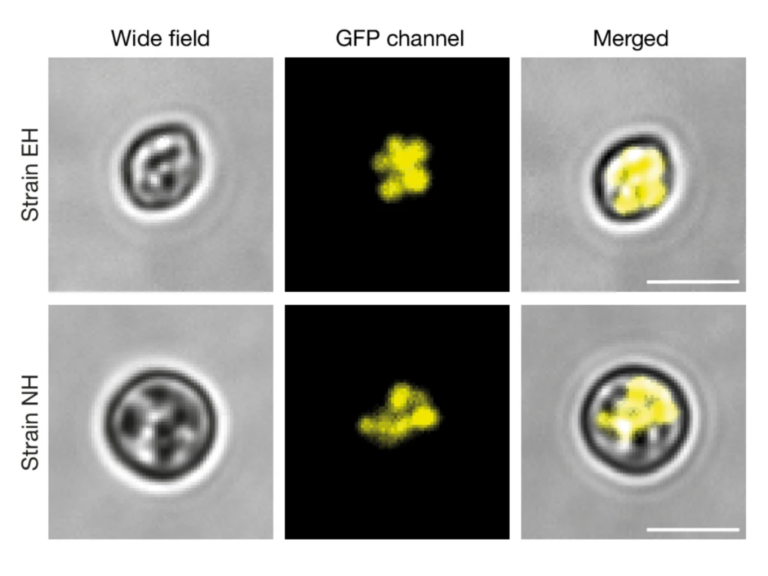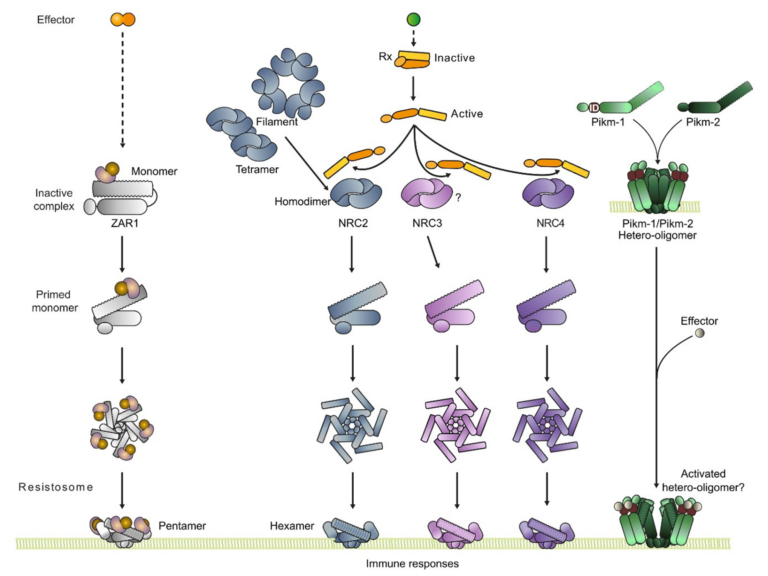Effector-dependent activation and oligomerization of NRC helper NLRs by Rpi-amr3 and Rpi-amr1
Plant pathogens compromise crop yields. Plants have evolved robust innate immunity that depends in part on intracellular Nucleotide-binding, Leucine Rich-Repeat (NLR) immune receptors that activate defense responses upon detection of pathogen-derived effectors. Most sensor NLRs that detect effectors require the activity of helper NLRs, but how helper NLRs support sensor NLR function is poorly understood. Many Solanaceae NLRs require the NRC (NLR-Required for Cell death) class of helper NLRs. We show here that Rpi-amr3, a sensor NLR from Solanum americanum, detects AVRamr3 from the potato late blight pathogen, Phytophthora infestans, and activates oligomerization of the helper NLR NRC2 into a high-molecular weight resistosome. The NRC2 resistosome also forms upon recognition of P. infestans effector AVRamr1 by another sensor NLR, Rpi-amr1. The ATP-binding motif of Rpi-amr3 is required for NRC2 resistosome formation, but not for interaction with the cognate effector. The NRC2 resistosome can be activated by AVRamr3 homologs from other Phytophthora species. Mechanistic understanding of NRC resistosome formation will underpin engineering crops with durable disease resistance.


